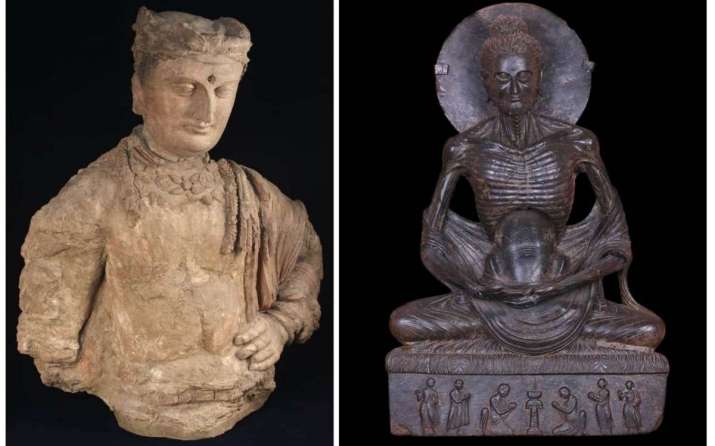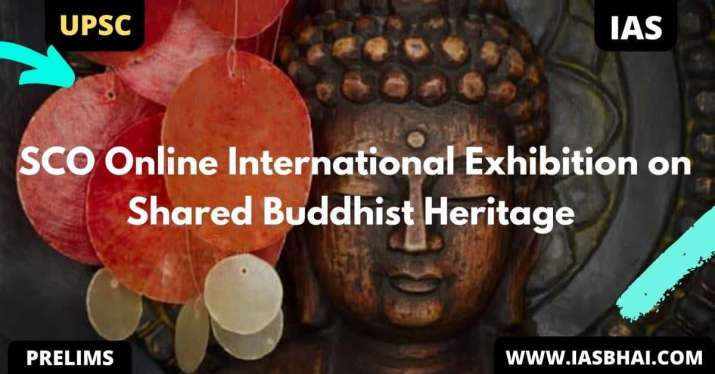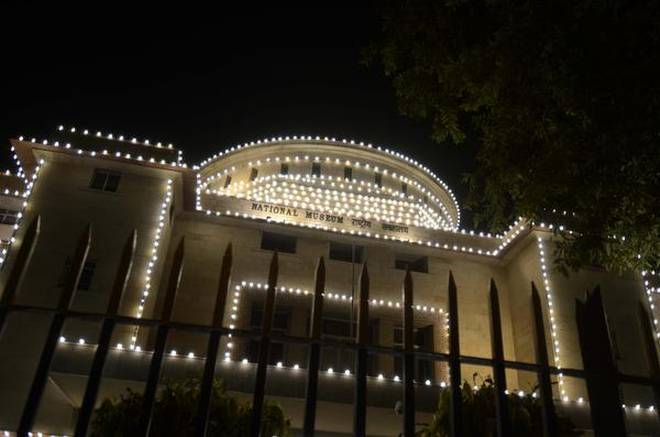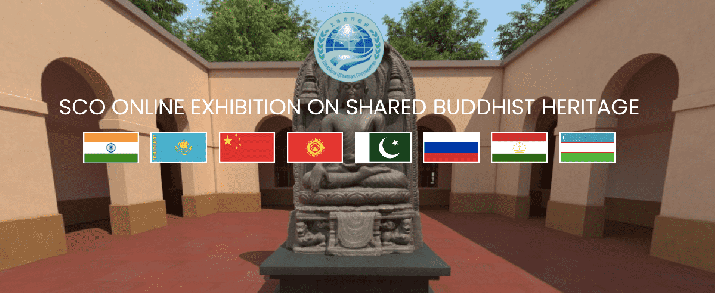NEWS
First Online Exhibition of Shanghai Cooperation Organisation on Shared Buddhist Heritage Opens
 From sawdust.online
From sawdust.onlineThe first ever Shanghai Cooperation Organisation (SCO) online international exhibition on “Shared Buddhist Heritage” was launched during the 19th meeting of the SCO Council of Heads of Government. The meeting was held on 30 November in New Delhi, India via video-conference.
The exhibition, which was unveiled by M. Venkaiah Naidu, India’s Vice President and the Chair of the SCO Council. It was developed and curated by the National Museum of New Delhi in active collaboration with SCO member countries India, Kazakhstan, China, Kyrgyz Republic, Pakistan, Russia, Tajikistan, and Uzbekistan.
The exhibition features the latest technologies, including 3D scanning, a webGL platform, virtual space utilization, innovative curation and narration methodology, and more. Visitors have an excellent opportunity to gain knowledge and a glimpse of the artistic wealth displayed in various museums across Asia.
 From Iasbhai.com
From Iasbhai.com“[The] Buddhist philosophy and art of Central Asia connects SCO countries to each other. This online international exhibition presents an excellent opportunity for visitors to access, appreciate and compare Buddhist art antiquities from SCO countries on a single platform and from the comfort of their home,” said the Ministry of Culture of India in a statement. “Such a transnational online exhibition also has potential to connect, heal and rejuvenate communities in current pandemic times.” (The Hindu)
The institutions participating in the exhibition are the National Museum (New Delhi), the Indian Museum (Kolkata), the National Museum of Kazakhstan, the Dunhuang Academy (China), the National Historical Museum of the Kyrgyz Republic, several museums in Pakistan, the State Museum of Oriental Art, Moscow (Russia), the National Museum and National Museum of Antiquities (Tajikistan), and renowned archaeological sites of Uzbekistan.
The Indian gallery displays the Buddhist treasures from the Gandhara and Mathura Schools, Nalanda, Amaravati, Sarnath in a 3D virtual format, according to The Ministry of Culture of India. The Prime Minister of India Narendra Modi lauded the National Museum, New Delhi, for its innovative efforts of using technology in the cultural sector in his Maan Ki Baat session—a regular radio program in which he addresses the people of India—on 29 November.

National Museum in New Delhi. From thehindu.com
The Pakistan hall of the exhibition depicts the life of the Buddha and Buddhist art through a collection of impressive Gandharan art objects from Karachi, Lahore, Taxlia, Islamabad, SWAT, and Peshawar museums. These include depictions of Siddhartha fasting and a footprint of Buddha from Sikri as well as a meditating Buddha from Sahri Bahloi and the miracle of Sravasti from Gandhara.
The State Oriental Art Museum, Moscow, contributed over 100 objects that depict the Buddhist Buriyat Art of Russia through icons, ritual objects, and monasteric traditions.
The Dunhuang Academy of China contributed a rich digital collection of Buddhist Art from Dunhuang, including ingenious architecture, resplendent murals, decorative designs, costumes, and more.
The Uzbekistan hall features the marvels of Buddhist art from the ancient Termez, Karatepa, and Fayaztepa heritage sites. The exhibition also showcases rare Buddhist art objects from various heritage sites and museums of Kazakhstan and Kyrgyzstan. The prime attraction of the Tajikistan hall is the 13-meter-long reclining “Buddha in Nirvana” from Ajina-Tepa.
 From Iasbhai.com
From Iasbhai.comThe exhibit, which will run until 28 February 2021, brings together objects representing artistic excellence embedded within an eclectic historical timeline spanning across the development of different schools of Buddhism in Asia. The exhibition can be accessed at its website for worldwide viewing.
See more
SCO Exhibition (National Museum, New Delhi)
Virtual Exhibition on Shared Buddhist Heritage of SCO (Journals of India)
SCO Online International Exhibition on Shared Buddhist Heritage (Nmvirtual.in)
Virtual exhibition on shared Buddhist heritage of SCO countries launched (The Hindu)
The first ever SCO Online International Exhibition on Shared Buddhist Heritage commences today (Ministry of Culture)
Related news from Buddhistdoor Global
First exhibition of Gandhara Buddhist Antiquities Opens in South Korea
Art Gallery in China Displays 3D-Printed Replicas of Ancient Buddhist Statues
The Kimbell Art Museum Exhibits Extensive Private Collection of Textiles, Ming Porcelain, Buddhist Art, and Jade
Related features from Buddhistdoor Global
The Faces of Kshitigarbha: A Book of Art about Hell’s Bodhisattva
Singapore Exhibition Sheds Light on Ancient Treasures from Myanmar
Diplomacy, Heritage, and Cultural Pride: Reviving the Buddhist Legacy of Islamic Pakistan
An Illuminating Exhibition on the Transmission of Buddhist Art at the Palace Museum in Beijing
A Journey Through 5,000 Years of Tibetan History and Culture at the Capital Museum in Beijing














